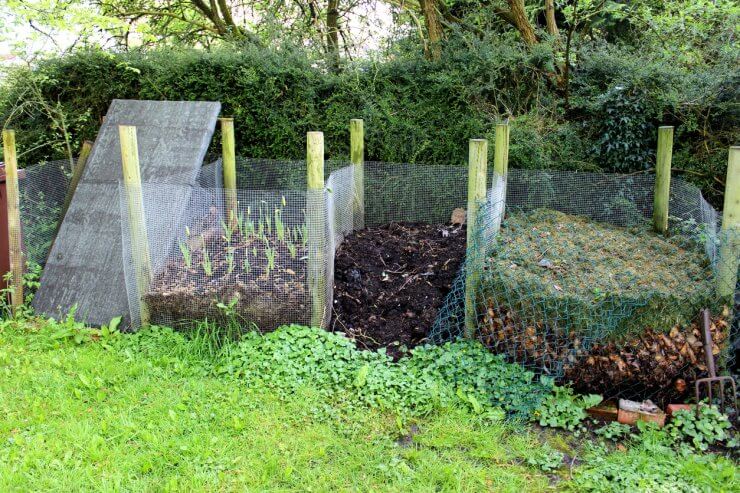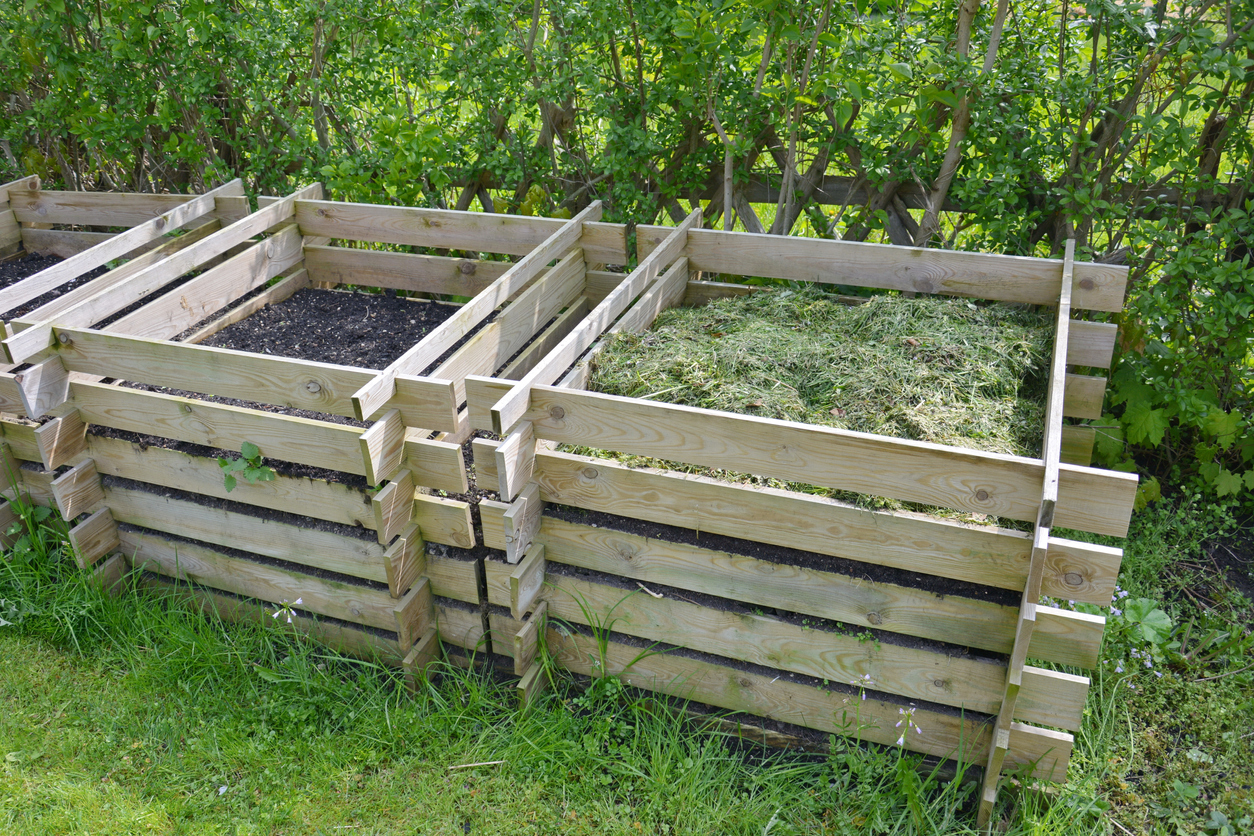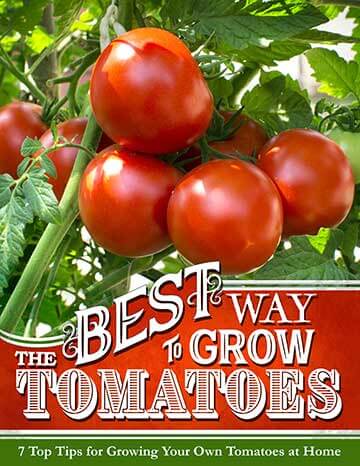
Figuratively. There are things you’ll want to know before you “figuratively” jump into open-air composting because I’m guessing you don’t want to actually do that.
If you’ve read more than a few blog posts here at the Food Gardening Network, you know we like composting. It’s good for the soil, good for your vegetables, and it keeps tremendous amounts of waste out of landfills. In fact, the Environmental Protection Agency (EPA) estimates that around 30% of our household waste could be composted.
However, that doesn’t mean that you can toss anything and everything into the compost heap. And there are a few additional considerations for open-air composting vs. composting in a tumbler or other closed container.
Discover 7 top tips for growing, harvesting, and enjoying tomatoes from your home garden—when you access the FREE guide The Best Way to Grow Tomatoes, right now!

The 10 do’s and don’ts of open-air composting: What you need to know to keep it from turning into a smelly mess
It’s probably not news at this point, but your compost shouldn’t be a stinky mess. Still, it’s a big concern if you have an open-air composting setup. If it does smell bad, you most likely need to get some air in there by turning it, or your green to brown ratio is off. We’ll get to that in a second. Just know that if the possibility of foul odors in your backyard is what’s stopping you from composting, you can let that worry go.
Now then, what should you do and not do to get a good outdoor compost heap going? Here are some of the do’s and don’ts your neighbors want you to know.
1. Do build or buy a 3-bin composting system. While it might seem excessive at first, especially if you don’t generate a lot of compost, you’ll be happy about this later on. Your three bins will hold fresh compost, in progress compost, and finished compost. You can read more about a 3-bin system here, but essentially, it helps you separate compost as it goes through the three stages of decomposition.
2. Don’t place your open-air composting system too close to your home or a neighbor’s home. It’s true that, done right, compost shouldn’t smell bad or attract critters, but we all make mistakes, and there’s no reason to make the learning curve more unpleasant than it needs to be.
3. Do use a pallet for the base of your compost heap. Oxygen is one of the primary requirements for composting. All those tiny microbes need air just like we do. That’s why we occasionally turn the compost pile (except maybe in the winter). That’s also why it’s good to have a wooden pallet or something similar at the base of your pile. A little air circulation is helpful.
4. Don’t leave it too open. While your compost does need air, it also needs moisture. Too much exposure to the wind or warm air can dry out the pile. If possible, place your open-air composting next to a garage or barn wall or use an open bin. However, don’t let the compost contact wooden structures or trees as it could accelerate the rotting process.
5. Do water your compost. Compost needs some moisture, and while you don’t want a soaking wet compost pile, you may need to add some water if it gets too dry.
6. Don’t let your compost sit in water. Cornell University puts it succinctly: “Good drainage is also important in order to avoid standing water and the build-up of anaerobic conditions.”
7. Do turn your compost. Two things happen as you increase the material in your compost pile. First, as the pile gets heavier, the air gets squeezed out of the inner areas. Second, all the heat and microbial activity in the center of the pile doesn’t make it to the out sections. By turning your pile with a shovel or pitchfork, you can create space of air to get in and move the outer materials in where they can break down.
8. Don’t turn your compost in winter. The composting process slows down a lot in winter – at least in areas where it gets cold. Mixing it up will only slow things down further.
9. Do be aware of local ordinances. Some municipalities don’t allow open-air composting. For instance, Eugene, Oregon, requires any food waste to be composted “in enclosed, rat-proof containers.” The city of Chicago also requires “a bin with a lid, a floor, and no holes or gaps larger than 1/4 inch” for composting.
10. Don’t attract rodents. Even if your location allows open-air composting, you don’t want to attract rodents. Obviously, there are no guarantees on this, but you can take steps to make your compost less inviting to small mammalian creatures. Keeping the compost properly mixed with browns and greens will help. So will regularly visiting and turning your pile. Rodents want a nice, safe, quiet place to hang out, so if you keep coming over and disturbing things, they won’t be as likely to stick around.
One last thing I’ll mention – and this goes for most composting – is that you can compost more items than you may realize. Anything from eggshells to tea bags (without staples!) to grass clippings to leaves and fruits and vegetables are compostable.
Likewise, some materials are not compostable. These include dairy products and oils, diseased plants, pet waste, meat, poultry, fish scraps, and chemically-treated grasses and plants.
And if open-air composting isn’t right for you, don’t give up! You can explore other methods of composting here!
What tips would you add to this for anyone thinking about composting?
Discover 7 top tips for growing, harvesting, and enjoying tomatoes from your home garden—when you access the FREE guide The Best Way to Grow Tomatoes, right now!



